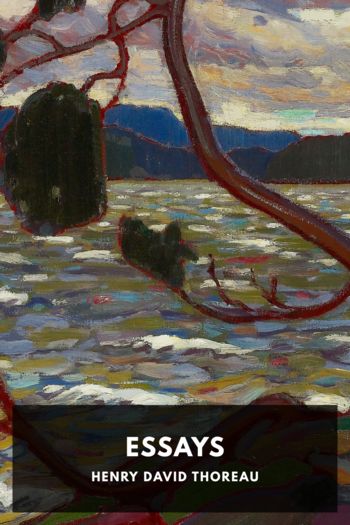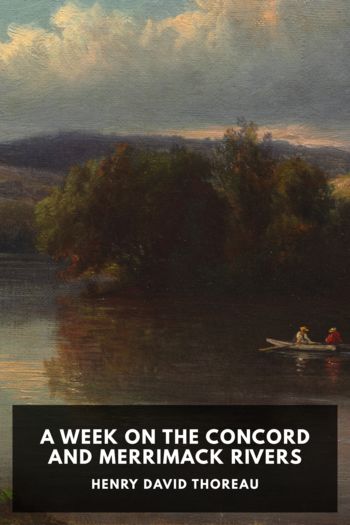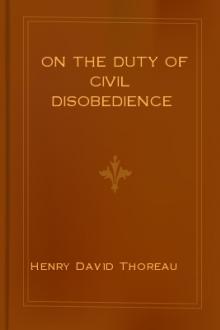Essays by Henry David Thoreau (feel good books .txt) 📕

Description
Though perhaps most famous for Walden, Henry David Thoreau was also a prolific essayist. Many of his essays touch on subjects similar to his famous book: long walks through nature, things found in moonlight that are invisible and unheard during the day, his preference for wild apples over domestic ones. In many ways he prefigured environmentalism, expressing his love for untouched nature and lamenting what the encroachment of man and cities were doing to it.
He also had strong opinions on many other subjects. One of his most famous essays, “On the Duty of Civil Disobedience,” was written as a result of his going to jail for refusing to pay several years’ worth of poll taxes. One of the primary reasons for his refusal was his holding the government in contempt for its support of slavery, and several of his other essays express support and admiration for John Brown, who thought to start a slave revolt when he attacked Harper’s Ferry in 1859.
Whether discussing trees in a forest, slavery, or the works of Thomas Carlyle, Thoreau’s essays are deeply personal and full of keen observations, often in poetic language. They give a sense of the man expressing them as being much more than the views being expressed.
Read free book «Essays by Henry David Thoreau (feel good books .txt) 📕» - read online or download for free at americanlibrarybooks.com
- Author: Henry David Thoreau
Read book online «Essays by Henry David Thoreau (feel good books .txt) 📕». Author - Henry David Thoreau
With its beautiful purple blush it reminds me, and supplies the place, of the Rhexia, which is now leaving off, and it is one of the most interesting phenomena of August. The finest patches of it grow on waste strips or selvages of land at the base of dry hills, just above the edge of the meadows, where the greedy mower does not deign to swing his scythe; for this is a thin and poor grass, beneath his notice. Or, it may be, because it is so beautiful he does not know that it exists; for the same eye does not see this and timothy. He carefully gets the meadow hay and the more nutritious grasses which grow next to that, but he leaves this fine purple mist for the walker’s harvest—fodder for his fancy stock. Higher up the hill, perchance, grow also blackberries, John’s-wort, and neglected, withered, and wiry June-grass. How fortunate that it grows in such places, and not in the midst of the rank grasses which are annually cut! Nature thus keeps use and beauty distinct. I know many such localities, where it does not fail to present itself annually, and paint the earth with its blush. It grows on the gentle slopes, either in a continuous patch or in scattered and rounded tufts a foot in diameter, and it lasts till it is killed by the first smart frosts.
In most plants the corolla or calyx is the part which attains the highest color, and is the most attractive; in many it is the seed-vessel or fruit; in others, as the red maple, the leaves; and in others still it is the very culm itself which is the principal flower or blooming part.
The last is especially the case with the poke or garget (Phytolacca decandra). Some which stand under our cliffs quite dazzle me with their purple stems now and early in September. They are as interesting to me as most flowers, and one of the most important fruits of our autumn. Every part is flower (or fruit), such is its superfluity of color—stem, branch, peduncle, pedicel, petiole, and even the at length yellowish purple-veined leaves. Its cylindrical racemes of berries of various hues, from green to dark purple, six or seven inches long, are gracefully drooping on all sides, offering repasts to the birds; and even the sepals from which the birds have picked the berries are a brilliant lake-red, with crimson flame-like reflections, equal to anything of the kind—all on fire with ripeness. Hence the lacca, from lac, lake. There are at the same time flower-buds, flowers, green berries, dark purple or ripe ones, and these flower-like sepals, all on the same plant.
We love to see any redness in the vegetation of the temperate zone. It is the color of colors. This plant speaks to our blood. It asks a bright sun on it to make it show to best advantage, and it must be seen at this season of the year. On warm hillsides its stems are ripe by the twenty-third of August. At that date I walked through a beautiful grove of them, six or seven feet high, on the side of one of our cliffs, where they ripen early. Quite to the ground they were a deep brilliant purple with a bloom, contrasting with the still clear green leaves. It appears a rare triumph of nature to have produced and perfected such a plant, as if this were enough for a summer. What a perfect maturity it arrives at! It is the emblem of a successful life concluded by a death not premature, which is an ornament to nature. What if we were to mature as perfectly, root and branch, glowing in the midst of our decay, like the poke! I confess that it excites me to behold them. I cut one for a cane, for I would fain handle and lean on it. I love to press the berries between my fingers, and see their juice staining my hand. To walk amid these upright, branching casks of purple wine, which retain and diffuse a sunset glow, tasting each one with your eye, instead of counting the pipes on a London dock, what a privilege! For nature’s vintage is not confined to the vine. Our poets have sung of wine, the product of a foreign plant which commonly they never saw, as if our own plants had no juice in them more than the singers. Indeed, this has been called by some the American grape, and, though a native of America, its juices are used in some foreign countries to improve the color of the wine; so that the poetaster may be celebrating the virtues of the poke without knowing it. Here are berries enough to paint afresh the western sky, and play the bacchanal with, if you will. And what flutes its ensanguined stems would make, to be used in such a dance! It is truly a royal plant. I could spend the evening of the year musing amid the poke-stems. And perchance amid these groves might arise at last a new school of philosophy or poetry. It lasts all





Comments (0)